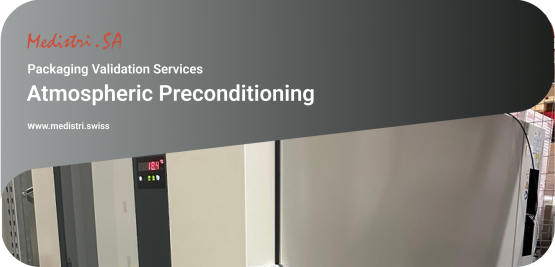(Download: Atmospheric Preconditioning in PDF by Medistri)
Packages need atmospheric testing to ensure that they can withstand different environmental conditions and protect the products inside them. For example, packages that are shipped to cold or hot regions may experience changes in temperature and humidity that could affect the quality and safety of the products. By simulating these conditions in a laboratory, packaging engineers can evaluate the performance and durability of the packaging materials and design, and make improvements if needed. Atmospheric testing can also help reduce product waste and increase customer satisfaction by extending the shelf-life and freshness of the products.
Atmospheric preconditioning simulates the effects of different temperature and humidity levels on packages and products. It’s often used to evaluate the performance and durability of packaging materials and products under various environmental conditions.
Atmospheric preconditioning is important because it helps the package or product reach a stable temperature and humidity level before testing. This reduces the variability and uncertainty in the test results, and ensures that the package or product is tested under realistic and consistent conditions. Atmospheric preconditioning also allows for a fair comparison between different packages or products, as they are all exposed to the same environmental conditions before testing.
Atmospheric preconditioning is performed by placing the package or product in a chamber that maintains the ambient temperature and humidity level for at least 12 hours. This allows the package or product to reach a stable and consistent state before testing. The ambient temperature and humidity level can vary depending on the location and season, but they are usually measured and recorded by the testing laboratory. Atmospheric preconditioning is a required step for all packages and products before any other atmospheric testing.
At Medistri, we follow the ASTM D7386 and ASTM D4169 standards, which are standard practices for container and shipping system performance testing. These standards specify different distribution cycles depending on the type and mode of transport, and they include atmospheric preconditioning as a mandatory step before testing.
ISTA 2A and ISTA 3A both include atmospheric preconditioning as the first test in the sequence, before atmospheric conditioning. The purpose of this test is to expose the packages to ambient temperature and humidity for a minimum of six hours, to simulate the conditions that may occur prior to shipment or during storage.
ASTM D7386: This is a standard practice for performance testing of packages for single parcel delivery systems, such as UPS and FedEx. It is based on the ISTA 3A test, which simulates the effects of shock, vibration, compression, temperature and humidity on packages. It is suitable for packages that weigh up to 150 lbs and have a girth of up to 165 inches. It consists of 13 test sequences, including atmospheric preconditioning, drop, vibration with top load, and temperature and humidity conditioning.
ASTM D4169: This is a standard practice for performance testing of shipping containers and systems. It covers various types and modes of transport, such as truck, rail, air, and ocean. It simulates the effects of handling, stacking, vibration, shock, temperature and humidity on packages. It is suitable for packages of any size and weight. It consists of 18 distribution cycles, each with different test sequences and levels. The user can select the appropriate distribution cycle and assurance level based on the product and package characteristics.
Should you fully validate your packaging system or should you simply test one particular characteristic of your sterile barrier system, Medistri laboratory is accredited and highly experienced for the most common test methods.
🎯 To learn more about Medistri’s Atmospheric Preconditioning, visit on our website here or directly contact our team at contact@medistri.swiss.
- The Medistri Team
#Medistri
